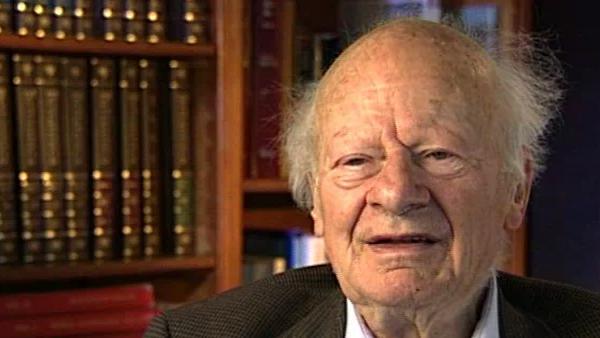NEXT STORY

My interest in the limits of quantum electrodynamics
RELATED STORIES

NEXT STORY

My interest in the limits of quantum electrodynamics
RELATED STORIES


|
Views | Duration | |
|---|---|---|---|
| 61. A paper on the orbits in a cyclotron | 392 | 04:18 | |
| 62. The synchrocyclotron and the betatron | 376 | 02:20 | |
| 63. The discovery of positrons | 496 | 03:49 | |
| 64. My interest in the limits of quantum electrodynamics | 571 | 01:32 | |
| 65. A paper with Arthur Compton on cosmic radiation | 411 | 02:03 | |
| 66. The Bethe-Heitler Formula | 566 | 00:29 | |
| 67. Yukawa's meson prediction | 463 | 03:01 | |
| 68. Being recommended Emil Konopinski | 404 | 02:21 | |
| 69. My postdoc students at Cornell | 560 | 01:53 | |
| 70. How the Sun is radiating? | 1 | 535 | 04:16 |


Dirac in 1928, I believe, in his relativistic theory of the electron, had found some very disturbing states, namely states of negative energy. And then clearly one couldn't have states with negative energy, so several people I think - Oppenheimer and Weyl - suggested that probably these states of negative energy were all filled and whenever you had a hole in such states that... that indicated...
[Q] Can I interrupt you for a second, because I think what happened was that it's Dirac who filled all the holes, but he believed that they would be protons.
Correct, he thought they would be protons, and Weyl and Oppenheimer said 'No they have the same mass as the electron and therefore they are positively charged electrons.' And then these positively charged electrons were found experimentally, I believe first by Anderson and Neddermeyer in Pasadena, who demonstrated quite clearly that in cosmic rays there were particles which curved the wrong way round in a magnetic field and had on the other hand the mass of an electron. So there we had positrons, and by the time I got to England in '33 they were well recognized, and... together with Heitler I produced a theory of the radiation emitted by high energy electrons and the production of positron and electron pairs. Well practically all the real work was done by Heitler together with an Austrian physicist, Sauter, but I was worried that the cross section predicted by the theory diverged at high energy. So I decided there must be some limit to that and so I discussed what would happen at high energy due to the fact that an electron after... an atom after all is neutral, so the nuclear charge would be screened by the electrons of the atom. And so instead of that, you would have a... there would an effect of the... of the screening of... of the charge of nucleus by the electrons, and that would lead to the cross section remaining finite.
The late German-American physicist Hans Bethe once described himself as the H-bomb's midwife. He left Nazi Germany in 1933, after which he helped develop the first atomic bomb, won the Nobel Prize in Physics in 1967 for his contribution to the theory of nuclear reactions, advocated tighter controls over nuclear weapons and campaigned vigorously for the peaceful use of nuclear energy.
Title: The discovery of positrons
Listeners: Sam Schweber
Silvan Sam Schweber is the Koret Professor of the History of Ideas and Professor of Physics at Brandeis University, and a Faculty Associate in the Department of the History of Science at Harvard University. He is the author of a history of the development of quantum electro mechanics, "QED and the men who made it", and has recently completed a biography of Hans Bethe and the history of nuclear weapons development, "In the Shadow of the Bomb: Oppenheimer, Bethe, and the Moral Responsibility of the Scientist" (Princeton University Press, 2000).
Tags: Pasadena, Paul Dirac, J Robert Oppenheimer, Hermann Weyl, CD Anderson, Seth Neddermeyer, Walter Heitler, Fritz Sauter
Duration: 3 minutes, 50 seconds
Date story recorded: December 1996
Date story went live: 24 January 2008